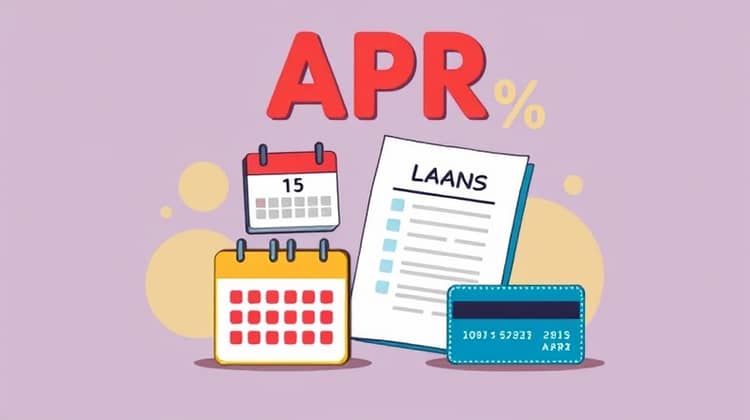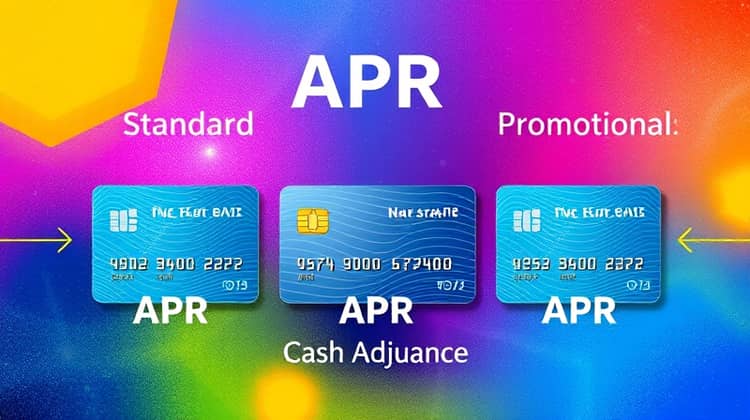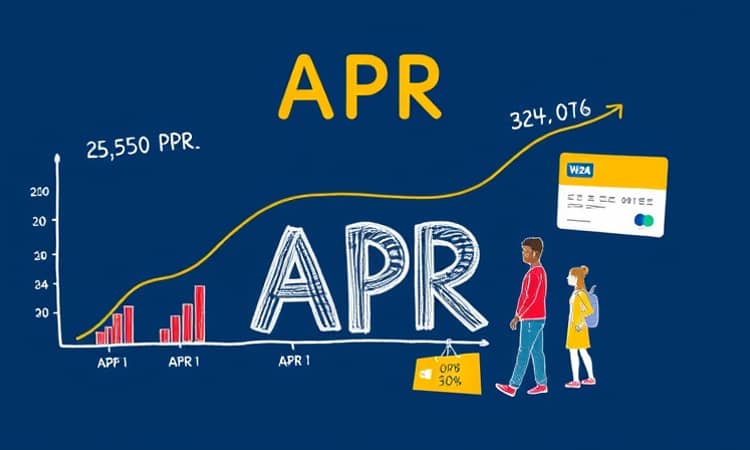Understanding APR, or Annual Percentage Rate, is crucial for managing your credit effectively. It directly impacts the cost of borrowing on your credit card, influencing how much interest you pay on any outstanding balance. A higher APR can lead to significant costs over time, while a lower APR can save you money.
As consumers, being informed about APR enables us to make smarter financial decisions and avoid unnecessary debt. This article aims to break down the concept of APR in simple terms, explore the different types available, and how it affects the management of credit cards. Additionally, we will provide tips on finding and potentially lowering your APR, offering insights into making the best financial decisions when selecting a credit card.
Ultimately, by understanding APR, you can empower yourself with financial knowledge that allows for better credit card management and planning, reducing the anxiety that comes with debt.
What is APR?

APR stands for Annual Percentage Rate, which represents the annual cost of borrowing on a loan or credit card expressed as a percentage. This includes both the interest rate and any fees associated with obtaining the credit. Understanding APR is crucial as it gives consumers a complete picture of the potential cost of borrowing.
Credit cards often have varying APRs depending on the consumer's creditworthiness, the type of transaction, or the specific card terms. Additionally, APR can differ when the balance is paid in full versus when it carries over month-to-month. Therefore, understanding how APR works is essential for responsible credit card use and management.
For consumers who actively manage their credit and pay their bills on time, a low APR is beneficial as it minimizes interest charges. Conversely, carrying a balance can result in high-interest expenses that can accumulate quickly, making understanding APR a key factor in financial stability.
Different Types of APR

There are different types of APR that consumers should be aware of, each serving a unique purpose. The most common are standard APR, cash advance APR, and promotional APR. Knowing the differences can help cardholders make informed decisions about their credit card usage.
Standard APR applies to regular purchases made on the credit card and is the most frequently referred to rate. A cash advance APR, on the other hand, is the rate that applies when you withdraw cash using your credit card, and can often be significantly higher than the standard rate. Promotional APRs are temporary rates offered by credit card companies for a set period to entice customers, often with lower or even 0% interest on purchases or balance transfers. These can be beneficial but always come with terms that should be carefully reviewed.
- Standard APR: Applies to regular purchases.
- Cash Advance APR: Higher rates for cash withdrawals.
- Promotional APR: Limited-time offers with lower rates.
Having an understanding of these different types of APR can help consumers avoid costly mistakes when utilizing credit cards. Selecting the right type of card for your financial habits and needs can lead to significant savings in interest charges.
How APR Affects Your Credit Card

APR significantly influences the overall cost of using a credit card. Depending on your spending and payment habits, a higher APR will make it more expensive to carry a balance. In contrast, paying off the total amount owed before the due date can help avoid interest charges altogether, making the APR less of a concern.
Additionally, an elevated APR can affect your ability to manage debt effectively. Cardholders carrying high balances may find themselves trapped in a cycle of minimum payments that barely cover the interest, prolonging their repayment period and increasing total costs.
How to Find Your APR

Finding your APR is generally straightforward. Most credit card statements include the APR as part of the account details. Additionally, consumers can often find this information in the credit card agreement, which details all terms and conditions associated with the use of the card.
In some cases, credit card issuers may allow users to log into their online accounts or mobile applications, where the current APR will be prominently displayed along with other relevant account information.
If you have trouble locating your APR, you can also contact customer service for assistance. Representatives can provide detailed explanations of your interest rates and any other fees applicable to your account.
Lastly, it’s beneficial to keep track of changes. Credit card providers can modify APR based on various factors, including payment history or credit score, so staying informed is crucial.
- Check your monthly credit card statement.
- Review your credit card agreement.
- Log into your online banking account for details.
- Contact customer service for clarification.
By consistently checking your APR, you can stay informed and make smarter financial decisions regarding your credit card usage.
Importance of APR in Credit Card Selection

Overall, the APR is a critical factor when choosing a credit card. Consumers should compare APRs among different card options to select one that aligns with their financial habits. A lower APR can save you a significant amount of money if you plan to carry a balance from month to month.
- Assess your budget and spending habits.
- Compare APRs from various providers.
- Consider any promotional offers versus standard rates.
- Make a final decision based on total financial picture.
Selecting a credit card with a favorable APR can lead to significant savings and help maintain financial health.
How to Lower Your Credit Card APR

Lowering your credit card APR can provide long-term savings and is often achievable through several methods. Many consumers don’t realize that they can negotiate their rates with their credit card issuer, especially if they have a good payment history or improved credit score.
- Contact your credit card issuer and request a lower APR.
- Make regular, timely payments to enhance your credit score.
- Consider transferring balances to a card with a lower interest rate.
- Review your financial situation and understand your worth as a consumer.
By taking proactive steps to reduce your APR, you can effectively manage your credit card costs and overall financial wellness.
Conclusion

Understanding APR is essential for anyone using a credit card. By knowing how it works, the different types available, and its impact on your finances, you can make well-informed decisions about your credit usage.
Ultimately, an informed consumer is better equipped to navigate the credit landscape, ensuring financial stability and minimized interest expenses over the long run.














